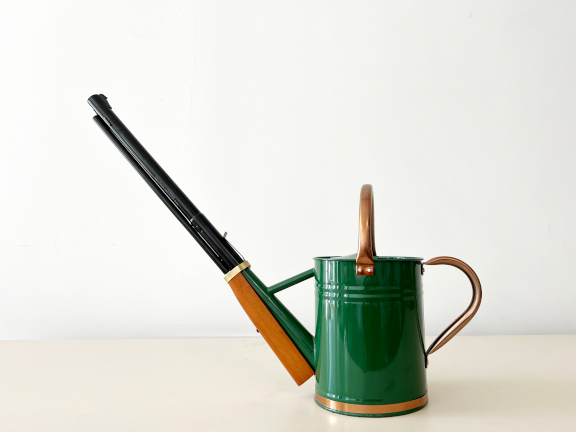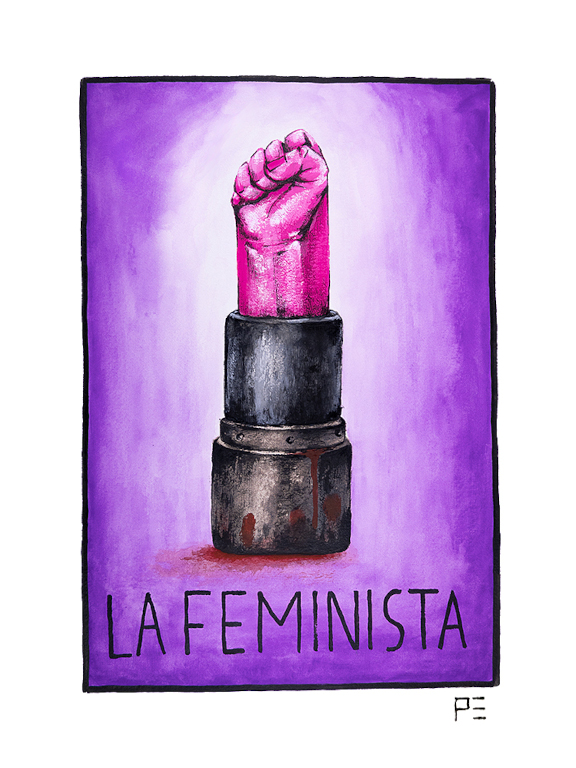Artist Interviews 2024
Patricia Espinosa 
By Laura Siebold

Patricia grew up in Mexico and Germany, experiencing educational diversity, passion, and perseverance. Patricia’s art is provocative and a call for action – her diverse cultural background and her passion to raise awareness for topics like gun violence, racial and social injustice is an important contribution to art with a cause.
Patricia creates and adjusts her work in response to significant social events that initiate the need for change. The idea for her well-traveled installation “America’s Teddy Bear” was sparked by a high school shooting; the importance of children’s safety and a memory tied to her own childhood, Patricia utilizes the teddy bear as an image of comfort in a condition of chaos. In her work, the artist calls on the associations that arise when simple, everyday objects are being placed into an unexpected context. Personal experience transforms the meaning of those objects, evokes emotions, and causes participation in the audience. Her collaboration with and support of fellow artists makes her a prime example of how art can transcend boundaries and make a positive impact across borders and cultures.
Patricia Espinosa lives and works in Brooklyn, N.Y.

You were born in Mexico, but live in Brooklyn, N.Y. How did you find your way from Mexico to the U.S.? Did you grow up in an artistic environment?
I was born in Puebla, Mexico, a relatively big city about 2 hours driving time from Mexico City. When I was a little girl, about 4 years old, we moved to Germany for two years and upon our return, my parents enrolled my siblings and I to the German School in Mexico City. Both the experience in Germany and my schooling years in Mexico played a major role in my personal life and development as an artist. At school I absorbed a German-style disciplined process, attention to detail and perseverance in completing and making things right. This contrasted with a vibrant, passionate, lively, and sometimes chaotic Mexican culture, so I combined the best of both, and it is that combination that to this day informs my creative process.
At home I always enjoyed manual crafts and drawing, but I was mostly inspired by my mother. She is very talented but never gave herself a chance to pursue art, her childhood family circumstances, and cultural norms made it extremely hard. However, when my siblings and I grew up, she enrolled both of us in painting classes where I learned the basics of drawing, oil, and pastel painting. At that point in my life, I considered art and drawing only a hobby. I thought that pursuing a fine arts career in Mexico wasn’t a viable option to make a living and therefore chose to study Graphic Design, which I thought was at least related to art. It was this choice that later opened the door for me to move to New York to earn an MFA in Design and Technology at Parsons School of Design.

One of the strengths of your work is to place conventional (household) items in a new
setting to raise awareness for controversial topics like gun violence. When did you first exhibit your art publicly? Can you tell us the story behind one of your most widely traveled installations – “America’s Teddy Bear”?
The story behind America’s Teddy Bear is quite personal and remains to this day one of the most pivotal moments in my practice. I am happy you asked because I don’t think I’ve shared the whole story.
When I was living in Germany (1976-1978), my parents bought me an orange teddy bear. It was one of my most treasured possessions until it was lost when I was an adolescent. Forty years later, I returned to Germany with my own family (2016-2018); I was determined to find a replica of my lost and beloved teddy bear. My children helped me browse the famous Steiff stores and dozens of antique stores, with no luck. On February 14th, 2018, while watching the horrific images in the news of the shooting at Marjory Stoneman Douglas High School in Parkland, Florida, I spotted an almost identical orange teddy bear, amongst flowers and candles placed on victims’ shrines. I can still remember how I felt; I was traumatized by the shooting, and in a matter of seconds, when seeing my old teddy bear, I remembered the feeling of comfort and joy that I had when holding it in my arms. I guess I had an instant connection between the object, the emotion, and my experience. The next few days I started sketching and it was that moment that gave my lost teddy bear a second life.
A month later in March of 2018, I made the first installation of America’s Teddy Bear in the window of ALAS – Atelier and Art Space in Frankfurt, Germany.
[Additional background behind this story]
My life was rocked in 2012. First, a dear friend lost her 2 young children to a horrific murder at her home in Manhattan; and months after this, the shooting at Sandy Hook Elementary school took place. I was in my kids’ school, for drop-off, when it happened. I remember their teachers in the hallways hugging each other and it wasn’t until I got home that I understood why. The children killed in Sandy Hook were the same age as mine. Both acts of violence took a toll on me and highly influenced my determination to do something about it.

Some of your works, ordinary objects placed in an unusual context, may be a bit hard to
read at first glance. Their core only reveals itself either up close, or when seen from a distance,
through transformation. What is the process of creation like for you? How important is the concept of simplicity for your work?
Inspiration often strikes outside the confines of my studio, while doing ordinary things. Like my teddy bear’s story, I feel most of my work is the result of an emotion linked to a particular object or action and with my day-to-day experience. And it is in the same way that I hope the public will connect with my work.
The simplicity begins with the inherent simplicity of the common objects I use and continues with the process once in the studio; thinking conceptually through materials, I allow their qualities and meanings to gradually reveal. I simplify, remove them from their original or assigned purpose and make subtle transformations. I often combine these materials and objects with iconic imagery and symbols. For example, in “Watering Can”, the spout of a regular garden watering can is replaced with a steel riffle barrel. I didn’t change much of either object, I just replaced one part of the can with another of the gun, a simple exchange.
By making these minimal changes to everyday objects, keeping them recognizable and altering the context, I hope that the next time that object is used, or a specific action is executed, it will remind the viewer of the topic I am addressing, thus making a connection with their own lives and experiences.


Your website states that you wish to “shape our society through innovative and provocative
works of art that inspir[e] positive action and reflection”. How do you succeed in sparking positivity and change through
contradiction and provocation in your spectators and audience? What is the impact you have felt in the communities you’ve shared your art with?
I believe part of the success I have witnessed in my work relies on fostering connections between the familiar and the artistic. To use the above example of the “Watering Can”; this piece was created for an installation called “Harvesting Graves”; where I placed the watering can next to a crop that had bullets spread instead of seeds, and on the next window showed a dirt grave. In this context, I instill the idea of what we sow today and the conversations we have with others can influence how we think about the impact of weapons on future generations.
The intention is to create art that is not only relatable, but also influential, prompting positive actions and inviting viewers to engage actively. Engagement can eventually manifest in several ways, for example, by joining advocacy groups, or participating in petitions to bring forward to political leaders and to ultimately press our government to regulate the proliferation of guns and place laws promoting gun safety.
I had the fortune to exhibit both America’s Teddy Bear and Harvesting Graves at a Franklin Windows here in Brooklyn. I received dozens of comments and even donations to help the Teddy travel to other locations, but the most meaningful was when the owner of the gallery and I organized a vigil for the students, teachers, and families of Uvalde Texas, after the tragic school shooting at Robb Elementary School. America’s Teddy Bear was up in the windows when this tragedy happened. People came together as a community to grief and support. This was the most touching occurrence and perhaps when I have felt the biggest impact of my work.
It is in moments of sincerity and reflection like this when action takes shape.

Your passion for important topics like gun violence, racial and social injustice and inequality clearly shows in your work. Are there further specific causes you are passionate about and which you would like to explore in the future?
Yes, I would like to do more pieces about the environment and our planet. I am now working on my first Public Art piece, and it is about water; it is a sculpture that takes the form of a giant sponge twisted on the middle evoking the silhouette of an hourglass. It will be unveiled this Fall on Riverside Park North, in New York City.
I am also interested in continuing my work and advocacy about gender violence, particularly about the staggering amount of feminicides that take place in my home country, Mexico, and in Latin American countries in general.

I came across your work on The Altruist, an art collective that exclusively donates all profits of sold art to non-profit organizations. When did you first start collaborating with The Artruist. What do you gain from the collaboration?
I believe we started collaborating in May 2021. I love the selflessness of The Artruist! I can’t donate money to all the organizations I would like to, but through The Artruist, I get to donate my work, so that those donations reach all kind of worthy organizations. It’s very gratifying to know that people like and buy my work, and that the money goes to a good cause.

Your sculpture “Liberation Red” is dedicated to the resilience of the women in Iran. Can you
please explain the idea behind the sculpture.
The image of the lipstick with a fist sticking out on top originated with La Feminista (The Feminist); an illustration I did in March 2020 that is part of my larger project called Lotería: La Suerte Que Habla (Luck Talks). Loteria: Luck Talks is an exhibition and game inspired by the traditional Mexican bingo; a game played with a deck of cards instead of numbers. It features a repertoire of images that reflect on, celebrate, and denounce contemporary issues related to cultural, social, and political conflicts facing modern Mexico. On March 3, 2020, the largest march to denounce inequality, women violence, and the growing number of feminicides, took place in Mexico City. I created La Feminista in support to all these causes and as part of my Loteria collection of cards. Later, after watching the horror happening in Iran after the killing of Mahsa Amini, I started sculpting the image. The first sculpture was dedicated to the women in Iran, and I chose the color and name specifically for them; I have the image in my head of beautiful and strong Iranian women wearing bright red lipstick. Liberation Red is now part of a collection of sculptures I am calling “Fisticks”– with the same form but different colors – evoking different issues within the larger umbrella of Women Rights. I have “Fierce Fuchsia” supporting equality in the workspace, “Bruised Purple” condemning domestic violence, and “Black Knight”, evidencing prevalent racial discrimination.

I read something interesting on your website. At ALAS – Atelier & Art Space, located in
Frankfurt am Main, Germany, you combine an atelier with an exhibition space. When did this space emerge, and what determined the choice of location?
Are you still collaborating with international artists for exhibits and residencies in this space?
In the summer of 2016, we moved to Frankfurt, Germany due to a work commitment of my husband. It was a wonderful opportunity for all of us; my children gained a once-in-a-lifetime experience living in another country, going to school there, and acquiring a third language; and it was very special for me since I had lived very close to Frankfurt when I was a child. I had the opportunity to re-connect with the German culture and with my dear friends there, who I consider and call my German family. After settling in, I started looking for a studio space. Here is where the magic began. I came across this front-store space which I thought was targeted for businesses, but I was quite surprised and pleased to hear that I could afford it, even with the front-store space! Compared to NY rents, this would have been completely out of reach. This space had a back room which turned out to be all I needed for a studio space, and a full bath which in turn became very handy for future residencies. For the 18 months I had the space, we had about 8 exhibitions and 4 artists-in-residence. It was beyond anything I [had] imagined. And even though I no longer have that physical space in Frankfurt, I brought the idea behind ALAS back to NY.
I am still in touch with all the artists who exhibited and stayed at ALAS, Frankfurt, and as a matter of fact, in the summer of 2021, just coming out of the pandemic days, I teamed with one of them to create an exhibition titled “Home Bittersweet Home” at my current studio’s common place in Greenpoint, Brooklyn. ALAS (Spanish for wings) showcased and promoted rising international artists, and like its meaning, I envision it to continue supporting artists in any kind of place, environment or country and it is my hope to let it rise whenever an opportunity comes along.

Photos: Cam McLeod
Looking back at your career, what has been the most meaningful project you have done so far? Which work are you most proud of?
I will have to say that America’s Teddy Bear has been the most meaningful and one that keeps me going. It’s almost as if the teddy took a life for itself and set a mission for both of us.
This piece was the precursor of a new chapter in my development as an artist. My work took a whole turn after this, I started to trust myself more and to recognize my art and my creative process.
It helped me see the world from my unique perspective and encouraged me to be bolder and push harder. I somehow still feel that my orange Teddy Bear is around, and he is holding my hand and pointing me to see more carefully, respond and be more present.
America’s Teddy Bear Performance:
During the first part of the performance bullets are fired into the teddy-bear’s silhouette using a military-style modeled toy gun. In the second part of the performance (below), the victims’ bullets are hand-placed into the teddy bear. Ogden Contemporary Arts, 2021.
But I am also extremely proud of other pieces, specially of my project Loteria: Luck Talks. This is a lifelong project I collaborate and share with a dear friend (also Mexican) who writes the coplas (riddles) for each of the cards I illustrate. La Loteria is the connection with our home, our origins, and our culture, and it not only reflects or denounces the problems and injustices happening in Mexico, but it also highlights our strengths and honors our values and traditions.

What is the legacy you would like to create with your art?
I want my work to be accessible; on the one hand, I would like to see it placed in more public spaces (working hard for that to happen now!), thus, reaching every person equally, and on the other hand, I want it to be relatable, to spark an action of goodwill. I wish it will become part of an everyday experience. If my work gets just a few minutes of reflection, I’ll be a very happy artist and person!
|
|

